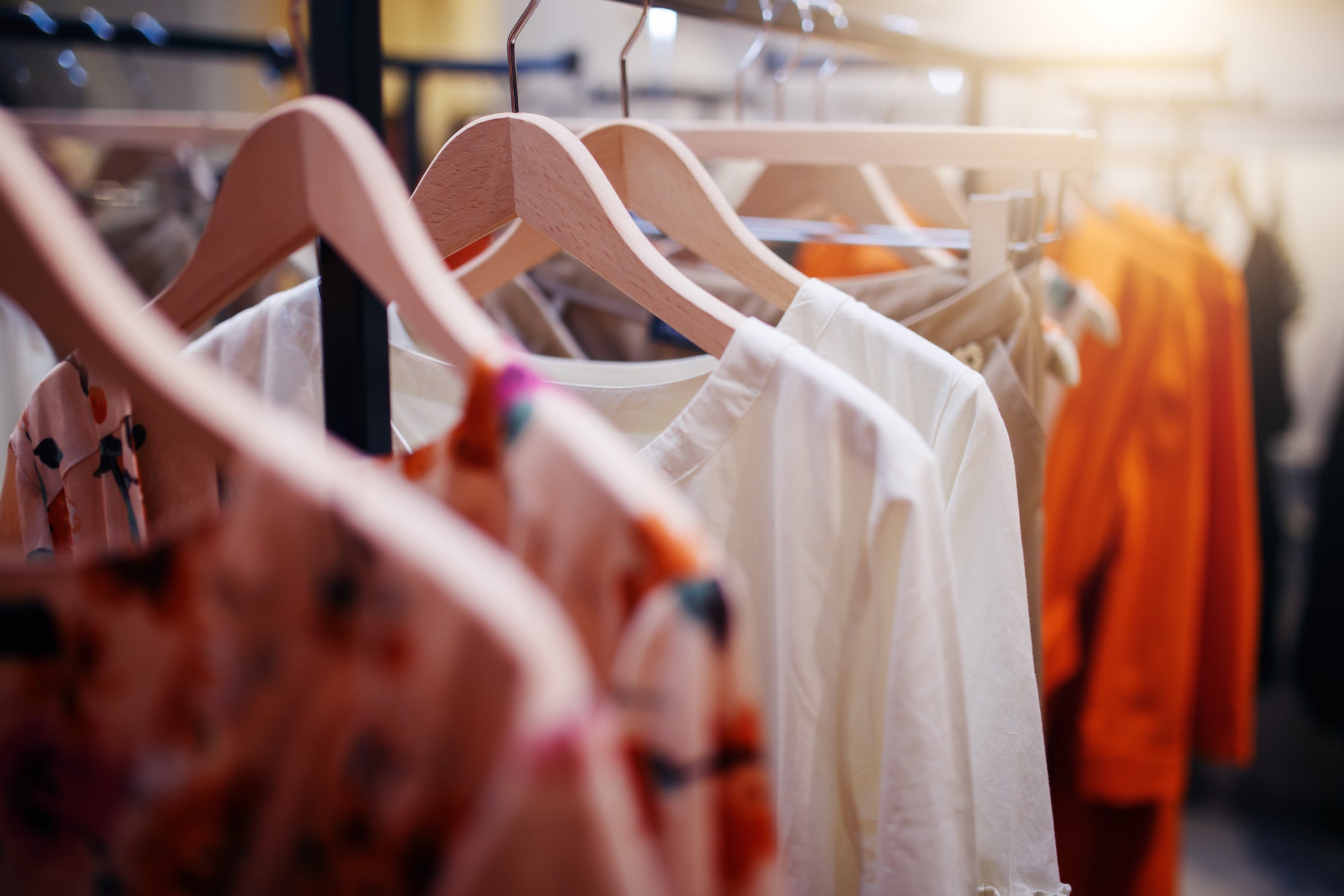How to shop sustainably in 7 simple ways, according to an eco-friendly fashion campaigner
From carrying a tote bag to buying Tencel-made clothing

Your support helps us to tell the story
From reproductive rights to climate change to Big Tech, The Independent is on the ground when the story is developing. Whether it's investigating the financials of Elon Musk's pro-Trump PAC or producing our latest documentary, 'The A Word', which shines a light on the American women fighting for reproductive rights, we know how important it is to parse out the facts from the messaging.
At such a critical moment in US history, we need reporters on the ground. Your donation allows us to keep sending journalists to speak to both sides of the story.
The Independent is trusted by Americans across the entire political spectrum. And unlike many other quality news outlets, we choose not to lock Americans out of our reporting and analysis with paywalls. We believe quality journalism should be available to everyone, paid for by those who can afford it.
Your support makes all the difference.The term “sustainability” has gained traction in the fashion industry in recent years, given the increasing awareness of the negative implications of “fast fashion”. And for good reason.
According to research by Google, the fashion industry accounts for 20 per cent of wastewater and 10 per cent of carbon emissions globally. And a recent report from the Ellen MacArthur Foundation – a registered charity that campaigns for economic change – showed that clothes account for half a million tons of non-biodegradable microfibres reaching the oceans every year – the equivalent of more than 50 billion plastic bottles.
As a result, several fashion brands including Stella McCartney Mother of Pearl and People Tree are making a conscious effort to focus on how to produce ethical apparel, from partnering with Fair Trade producers to sourcing recycled fabrics.
But the responsibility to champion sustainable fashion doesn’t lie solely with multi-million-pound brands. After all, we’re the ones investing in the clothes that will shape not only our wardrobes but the environmental, financial and social justice landscapes in generations to come.
“We can absolutely still love fashion while being aware of the environment at the same time,” says sustainable fashion activist Niomi Smart.
However, Smart – who recently launched her second clothes swap event, Smart Shop, with BBC Earth to raise awareness of sustainable fashion – says that changing shopping habits doesn’t happen overnight.
“We’re all so used to being lured into a high street shop because of a sale, not thinking twice about being given a plastic bag for the new purchase, and then a few weeks later finding yourself back in the store to keep up with ever-changing trends,” she adds.
“It would be so much easier if we could all make one or two changes to our lifestyles to become more sustainable, but it takes more of a change in mindset which takes a lot longer.”
So, how can you start shopping more sustainably?
Here are Smart’s top tips to forging eco-friendly shopping habits, from reducing plastic consumption to rummaging in charity shops.
1) Question your shopping habits
Ask yourself if you really need an item of clothing in your wardrobe before you buy it. When you try an item on in a shop changing room, question the exact reason you’re buying, what fabrics it is made of what it adds to your wardrobe from a sartorial perspective, and how often you will wear it. If you can’t tick all four of those boxes, the item is probably not worth spending your money on.

Try to own items in your wardrobe that you know you’ll wear again and again, so everything you own you love wearing and feel confident in. You should consider wardrobe basics to include jeans, a T-shirt, a classic shirt, and jumper, as well as a few statement pieces.
2) Choose second-hand
If you’re desperate to shop, satisfy your craving by visiting charity shops. By purchasing a second-hand item, you can rest assured that no new fibres have been made to create it, and it won’t end up in landfill. You’ll also save yourself money, too.
Don’t underestimate what unique and wonderful things you’ll find in a charity shop! I’ve found all kinds of gems after rummaging through them, including a vintage Ralph Lauren shirt and a Yves Saint Laurent bag for £50.
When it comes to shopping in charity shops, I try to shop in areas where I admire the local fashion. I’d also recommend visiting local markets, vintage shops, and swapping clothing with friends.
3) Always carry a tote bag
I use the mesh net ones that fold into almost nothing inside a handbag. By using your own bag during a shopping trip, it means you’re automatically cutting plastic bags out of your life.
Check out IndyBest’s list of the best tote bags to invest in here.
4) Prioritise buying clothes made of sustainable fibres
Avoid non-biodegradable materials such as nylon, polyester and materials treated with toxic chemicals such as viscose. Instead, invest in fabrics such as linen and organic cotton that use less water in production than their non-biodegradable contemporaries.
My top tip? Look out for the word “Tencel” on clothing labels in shops including & Other Stories, Levi’s, and Mara Hoffman. Tencel is a sustainable textile fibre made from responsibly-sourced wood to create more eco-friendly and fashion-friendly clothes sold by the likes of Reformation. It can also be combined with a range of other fibres such as cotton, polyester, acrylic, wool and silk.
5) Investigate brands’ delivery and packaging methods
Whenever possible, I would recommend shopping in person, but we all know that buying online is often more convenient. If you’re buying from eco-conscious brands, they’ll no doubt have eco-friendly delivery practices in place, such as multi-drop services and recycled packaging.
Furthermore, take the initiative to research the delivery methods of your favourite brands and email them about their packaging habits.
For example, Mari Hoffman’s ships all swimwear in compostable plastic poly bags, which will decompose in a landfill faster than standard plastic and can be added to a home or industrial compost. The brand’s hang tags are made from 80 per cent recycled paper and printed with soy-based inks, while its tag strings and sew-in labels are made of 10 per cent organic cotton.
According a recent survey of consumers from the US and UK by research company Globalwebindex, 42 per cent of consumers say that products that have packaging made from recycled and/or sustainable materials are important in their day-to-day shopping.

6) Clear out your wardrobe regularly
When it comes to creating a sustainable collection of clothing in your wardrobe, take every single item out of your cupboards and lay them all out on the bed. Then, try the Marie Kondo style by which you take each item and ask whether it brings you joy. If it doesn’t, or you simply haven’t worn the item in less than a year, despite trying it on several times, add it to the pile to go to charity or for recycling.
According to the Secondary Materials and Recycled Textiles (SMART) Association, 95 per cent of the textiles that are land filled each year could be recycled. As a result, donating and recycling clothes is one of the easiest ways to help support your local community and avoid the production of unnecessary waste.
In addition, pile anything that is damaged but you think will wear in the future in a pile to take to a tailor to be fixed. Always think about keeping essential items and a few statement pieces in your wardrobe, as well as considering new ways to update old clothing with the help of haberdashery.
Find your local recycling centre here.
7) Don’t immediately resort to the high street
Reve-En-Vert is an online sustainable haven. It is a curated retailer of luxury, honest and conscious items including clothing, beauty and accessories. I have discovered some incredible brands on there, and it’s a great place to find gifts.
Take the time to research brands with an ethical or sustainable ethos, such as the London based fashion brand Beulah that provides opportunities for vulnerable women around the world.
Read IndyBest’s list of the best sustainable fashion brands to shop at here.
Join our commenting forum
Join thought-provoking conversations, follow other Independent readers and see their replies
Comments